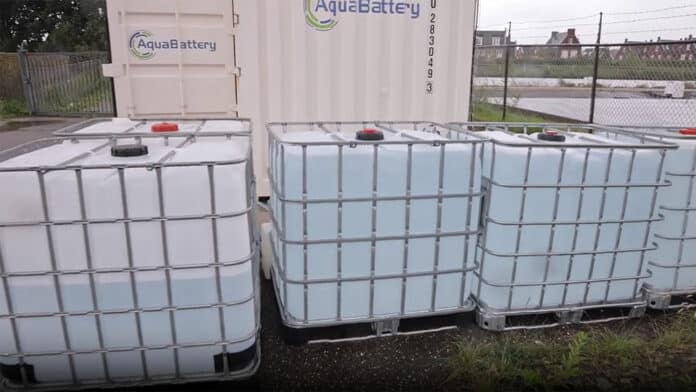With the rising share of renewables in the power mix, long-duration energy storage technologies are critical to integrating green electricity into the grid and supporting the decarbonization of the economy.
In a similar effort, Norwegian renewables company Statkraft and Dutch climate tech start-up Aquabattery have partnered to develop a promising technology to improve long-term storage of electricity through a flow battery made with salt water.
Called Long Duration Energy Storage (LDES) flow battery technology, the system uses saltwater as a storage medium and offers energy storage durations surpassing six hours. This is a notable advancement as the current large-scale battery energy storage systems generally have a duration between one and four hours.
LDES seems to be a promising solution for creating a sustainable and stable energy system globally and regulating the shifting supply of green energy as more and more countries transition away from fossil sources. Long Duration Energy Storage can prove to be beneficial for shifting energy from peak to low generation hours and deferring costly grid infrastructure investments. It may also alleviate grid congestion, which is a challenge in many countries today, and prevent wind and solar farms from connecting to the grid.
Aquabattery’s patented storage technology uses saltwater as a storage medium and is described as a flow battery that can independently adjust power (kW) and energy (kWh) capacity. AquaBattery’s solution could provide virtually unlimited storage capacity from 8 hours up to days, weeks, or even seasonally.
The best part is that it’s low-cost, highly scalable, and sustainable, as it only requires two of the world’s most abundant and cheap materials: table salt and water. Also, its storage capacity is easily expandable by just adding water reservoirs or using larger tanks. This also ensures safety from fire and health risks while also having a low carbon footprint.
To operate, the battery system uses three storage tanks, one with fresh water, one with concentrated salt water, and one with diluted salt water, and relies on membrane stacks. During the charging phase, the diluted salt water is split into concentrated salt water and fresh water in the membrane stack and stored separately.
The separation process is achieved through electrodialysis (ED), which uses charged membranes and electrical potential differences to separate ionic species from an aqueous solution and other uncharged components.
After the separation, the two streams are combined during the discharging phase. The energy generated during this process is then converted into electricity with the aid of the membrane stack via reverse electrodialysis (RED). RED is a technology that harnesses the salinity difference between two solutions, such as seawater and river water, to generate electricity.
Statkraft and Aquabattery are collaborating to build a pilot project to test this technology in Delft, The Netherlands. The pilot will last six to twelve months with the goal of investigating the scalability of Aquabattery’s technology and its commercial viability.
“Aquabattery’s new technology is promising. It has the potential to accelerate and revolutionize the development of long-duration energy storage. Without the right mix of energy storage in the system, we risk slowing the pace of wind and solar rollout, and consequently the green transition,” says Statkraft CEO Christian Rynning-Tønnesen in a press statement.
“As the world needs to triple up in renewables, succeeding with long-duration energy storage is one of many bits needed in the puzzle to actually make that happen. This technology is also environmentally sustainable, which is a priority for Statkraft,” says Rynning Tønnesen.
